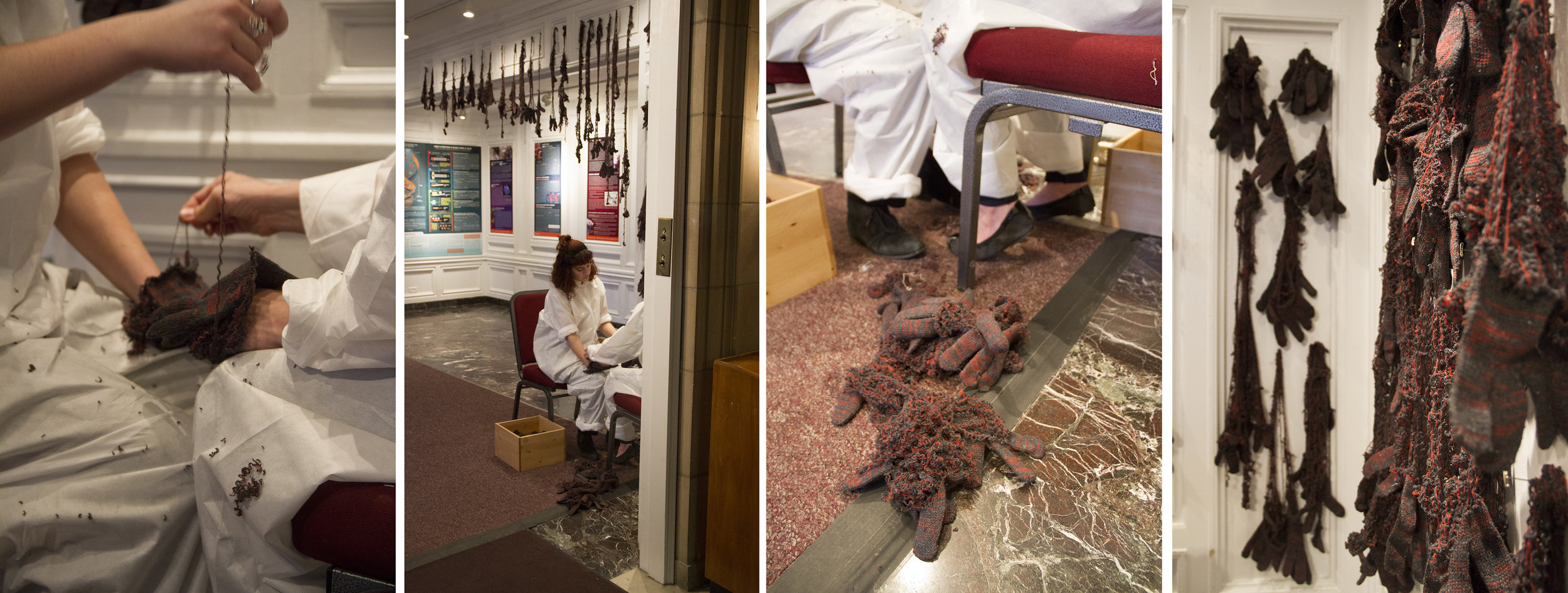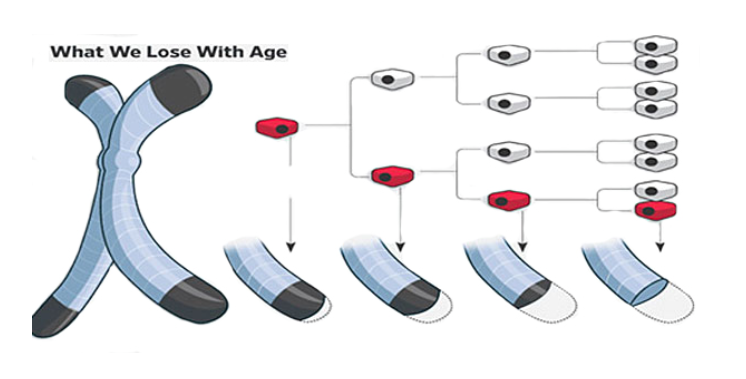Fractures and Dislocations (2014)
Fractures and Dislocations: The Excavating History Collective in Residence is a group exhibition of historically inspired site-specific artistic interventions including sculpture, painting, installation, prints, and performance, as well as a series of public programs, from May 2nd through May 30th, 2014 at the International Museum of Surgical Science (IMSS). The show was curated to create new pieces inspired by the past, present, and future of medicine; the Museum's development, collections, and exhibits; and the design, original residents, and physical structure of its historic landmark mansion. The works shown below are my contribution to the group exhibition along with a collaboration with Jenny Urbanek in a performance called Telomeres Unraveled.
Telomeres Unraveled
This 2 hour performance collaboration with Jenny Urbanek attempts to simulate the shortening of telomeres- the caps at the ends of DNA - believed to be connected to the process of aging. The act of unraveling gloves symbolizes genetic deterioration over time. The installation of gloves illustrates the remnants of the aging process.
materials: 240 gloves, pins, hazmat suits
Soft Chicken Flesh
Alexis Carrel worked with Charles Lindbergh to create the first artificial heart, known as the Lindbergh-Carrel perfusion pump. Both scientists were persistent in their desire to find immortality for humans. One of Carrel’s most famous experiments used the cells of chicken hearts that he kept regenerating in vitro for over 20 years. Surrounding the pump are hand-dyed pieces of silk covered in beeswax as representations of the tissue cultures. Despite its strange and almost mad beginnings, experiments such as these are remembered as major stepping stones in our attempts to improve human health. This piece stretches between two floors, connecting it to the piece below in the Hall of Murals, Of Human Evolution.
materials: hand-dyed silk and beeswax
Of Human evolution
This work references the logo for the Second International Eugenics Congress in 1921, found during my research on the Lindbergh-Carrel perfusion pump located on the third floor of the IMSS.
The symbol of the tree combined with the symbol of the hearth are combined in this piece to express the hidden mysteries found in this museum. This piece serves as a reminder that even the most heroic and impressive advances in the medical field may have roots in darker sources and political agendas.
materials: branches, plaster, acetate, white acrylic
Photography: Naama Hadany and Jenny Urbanek










